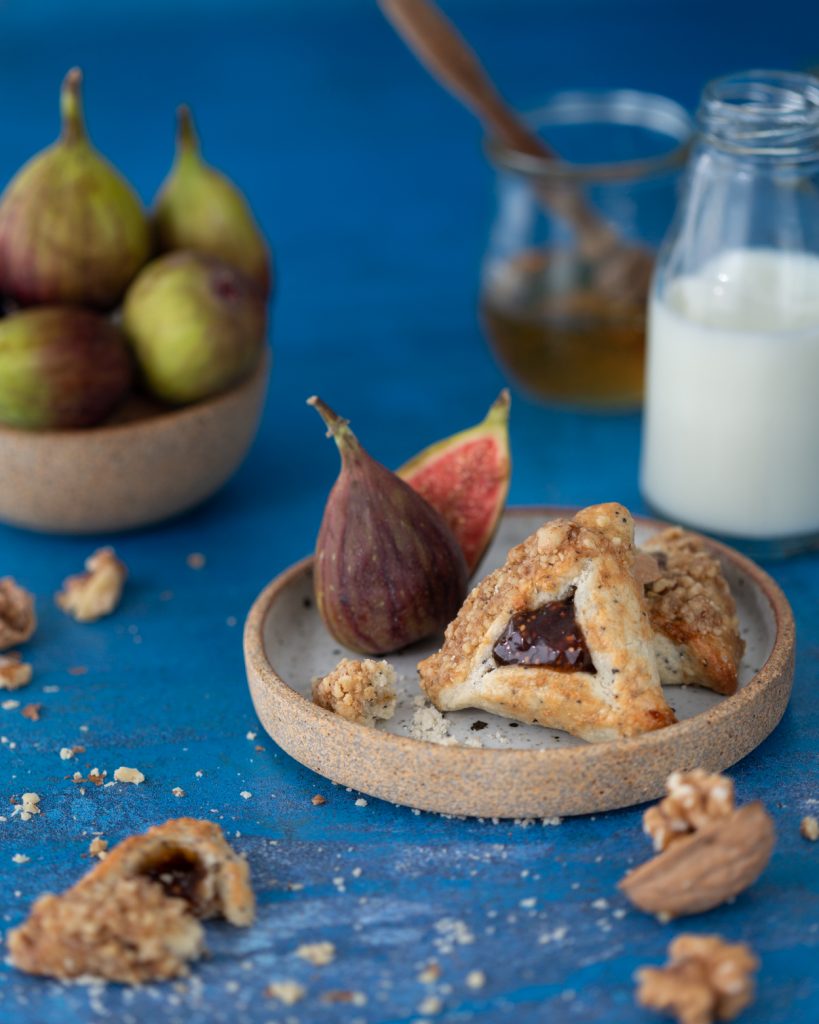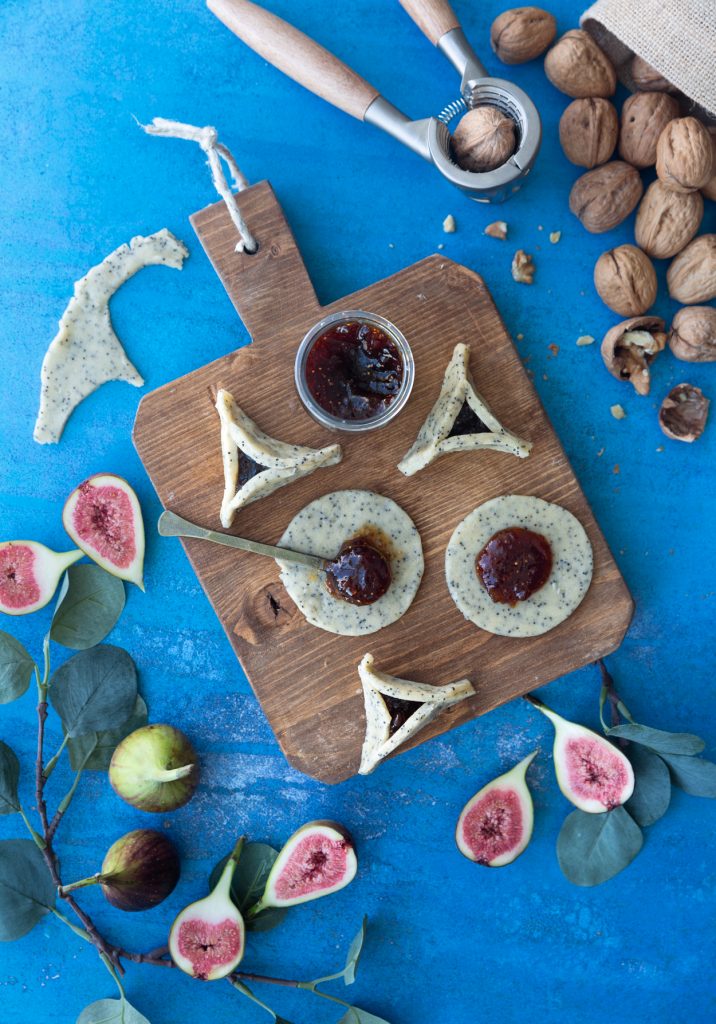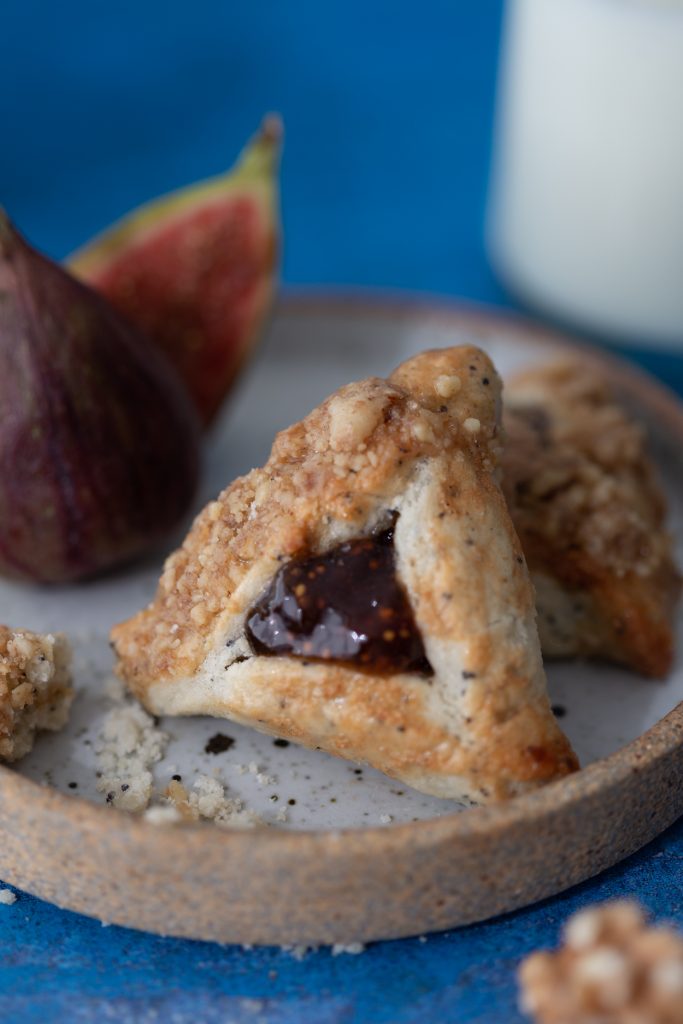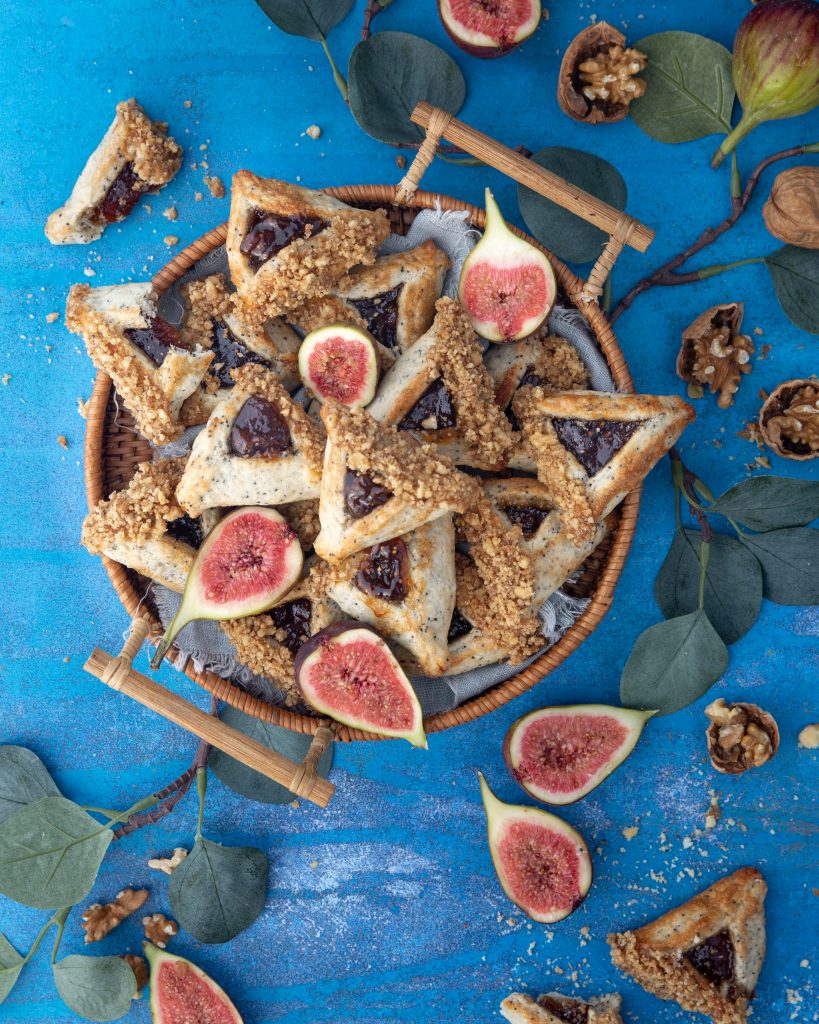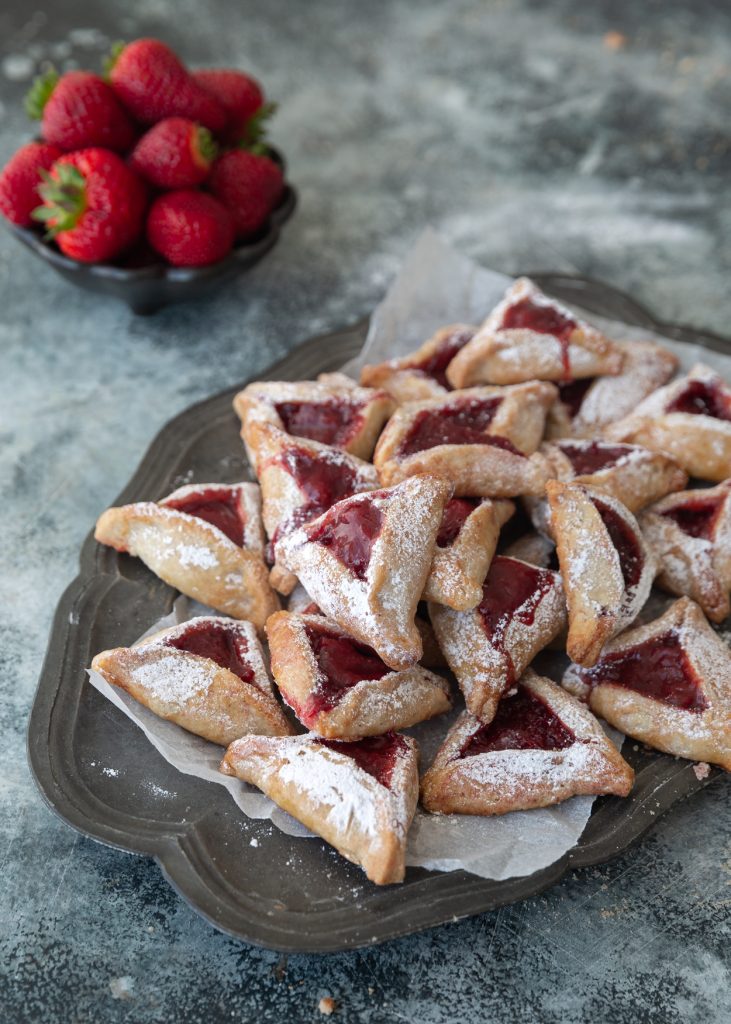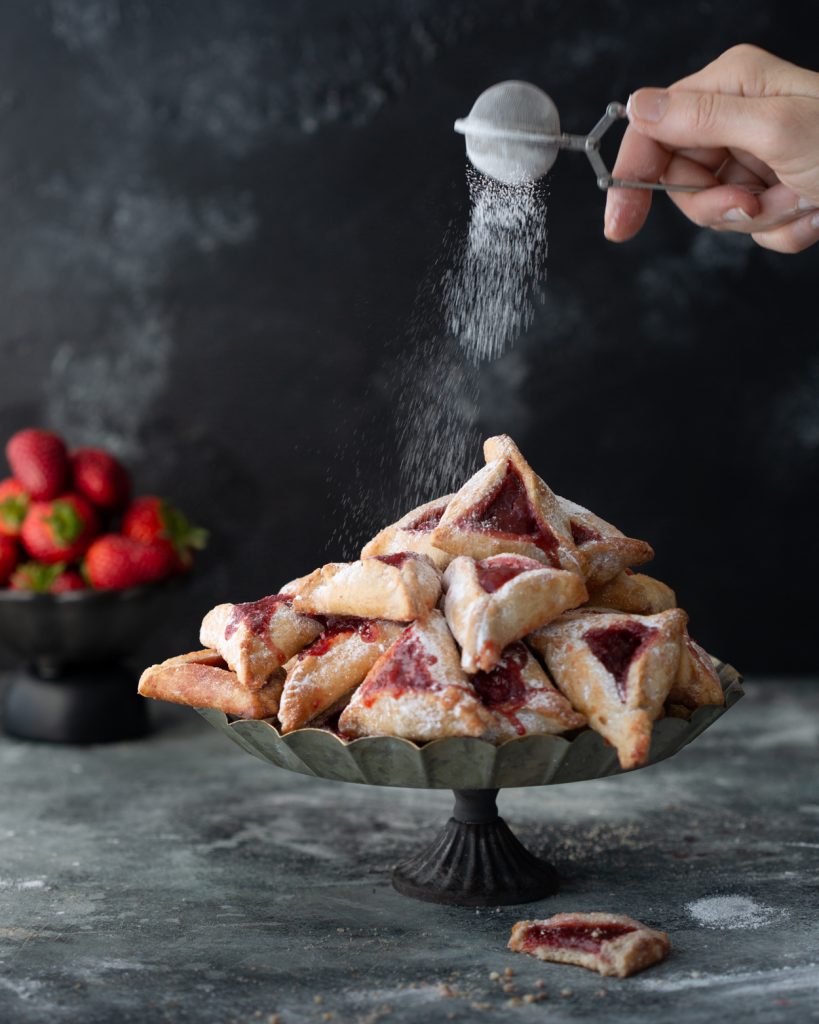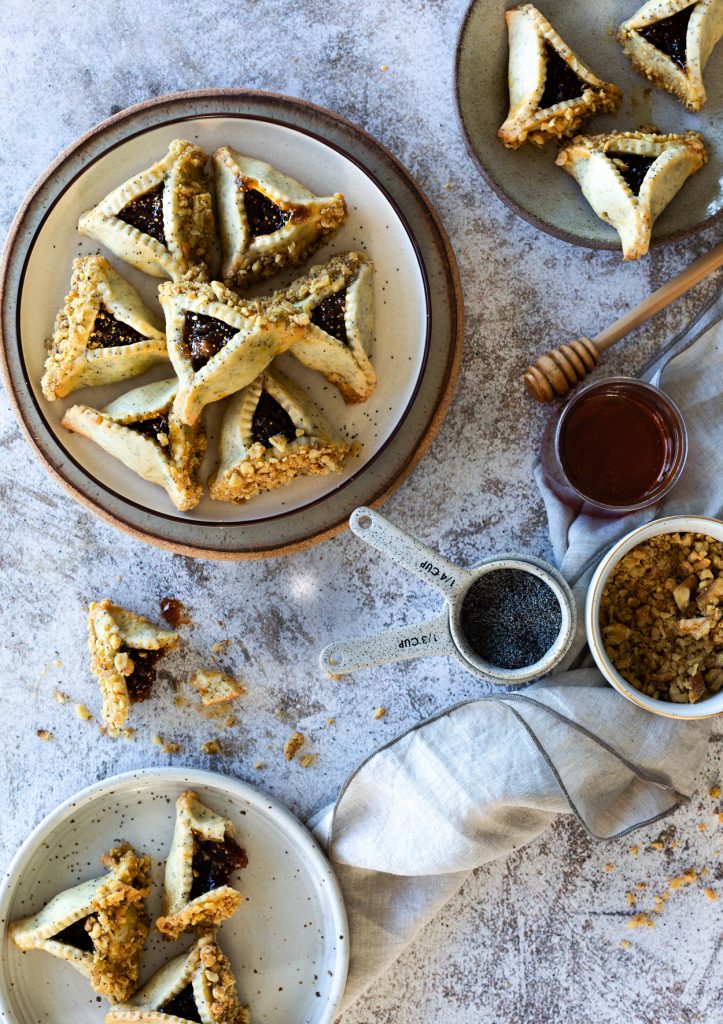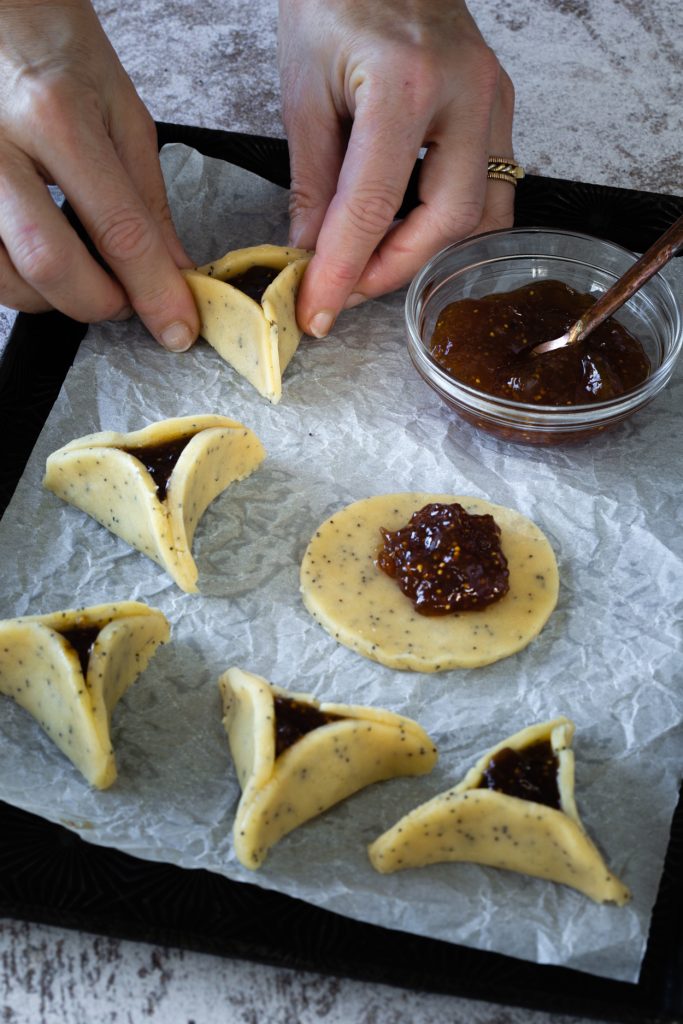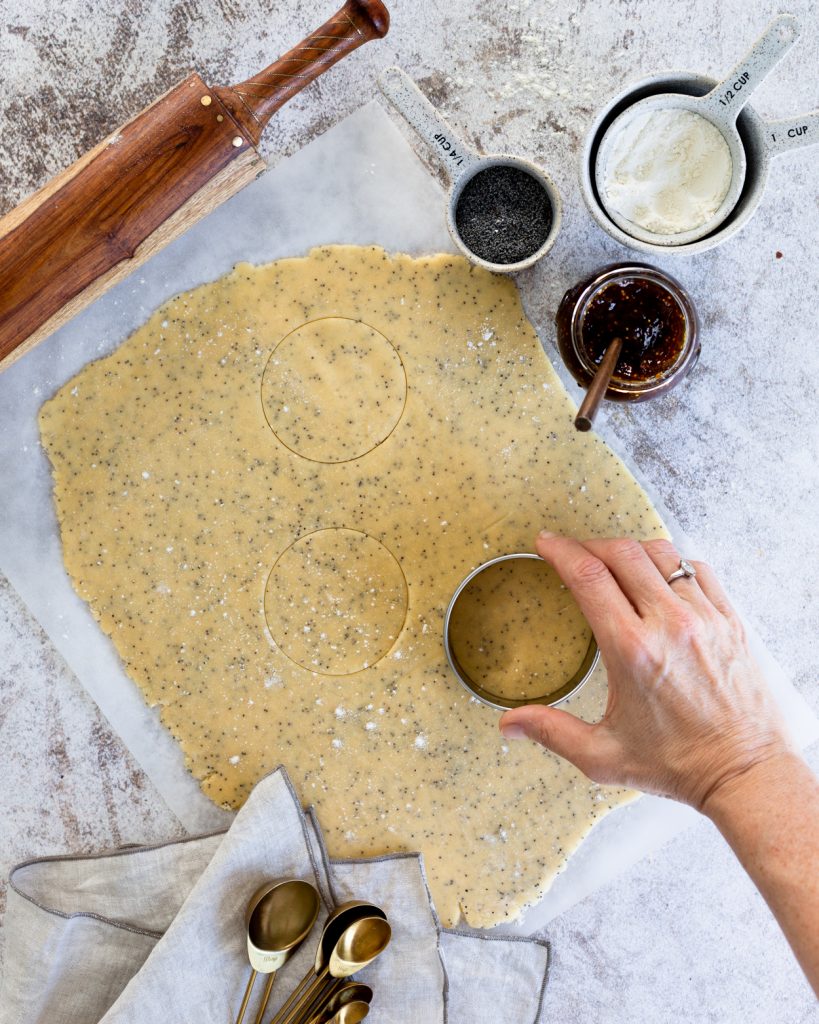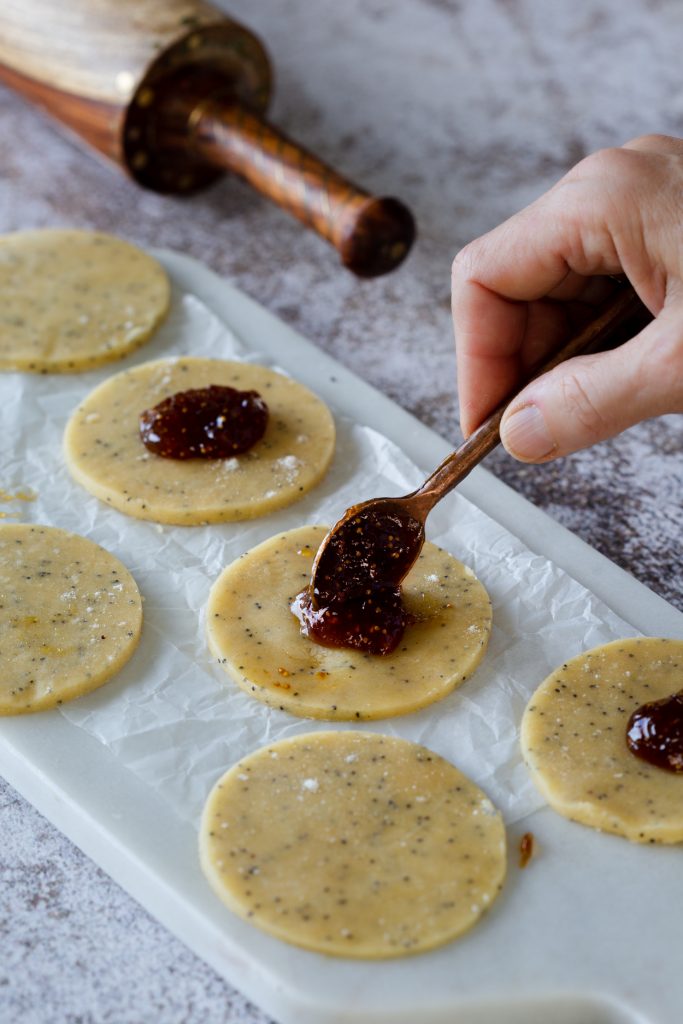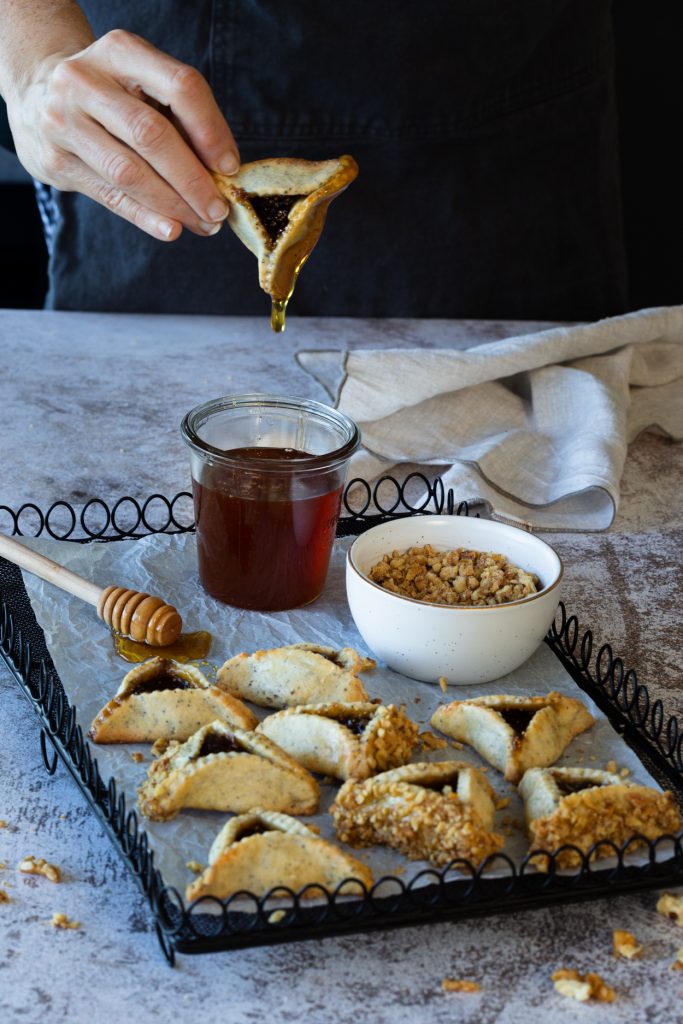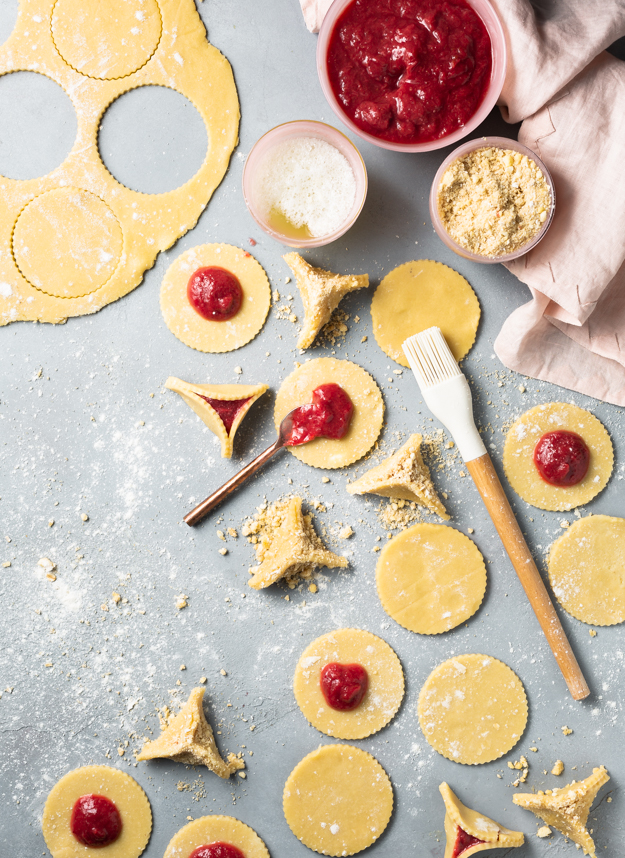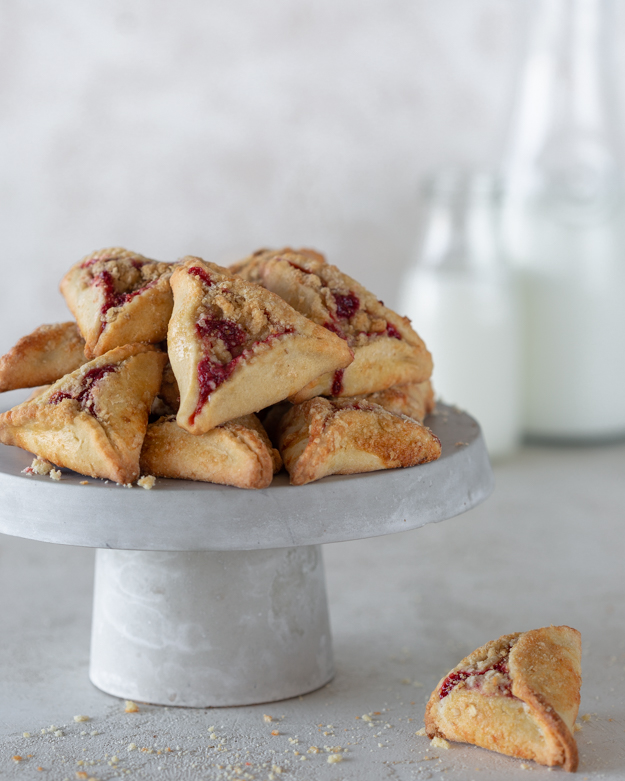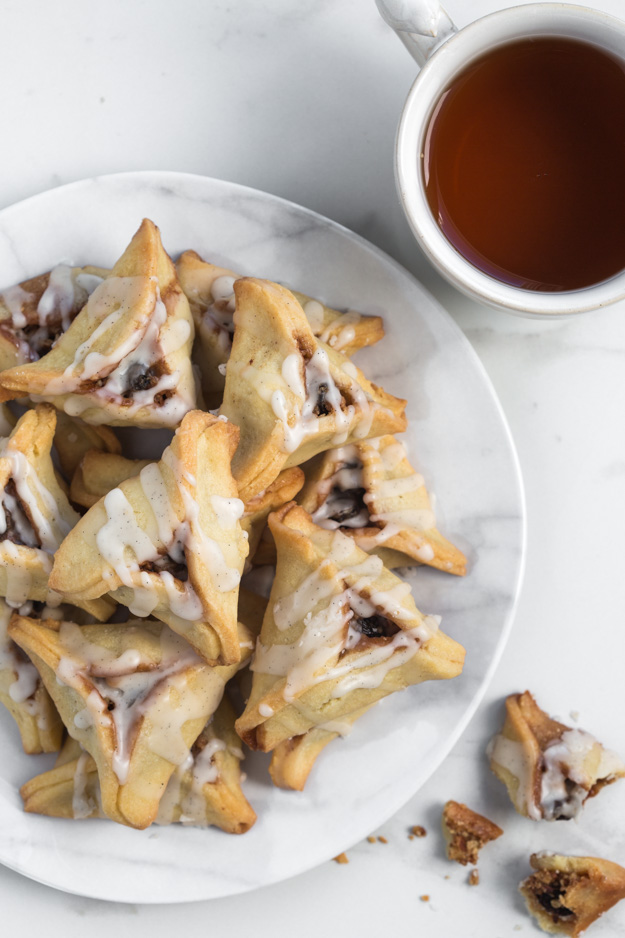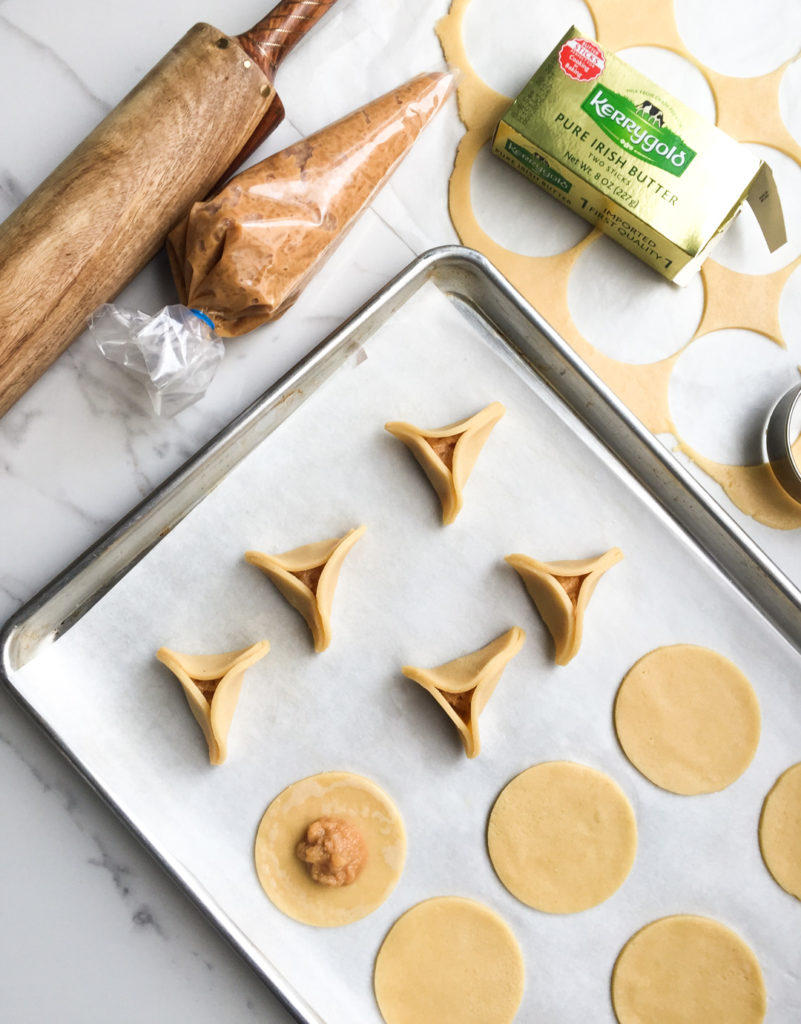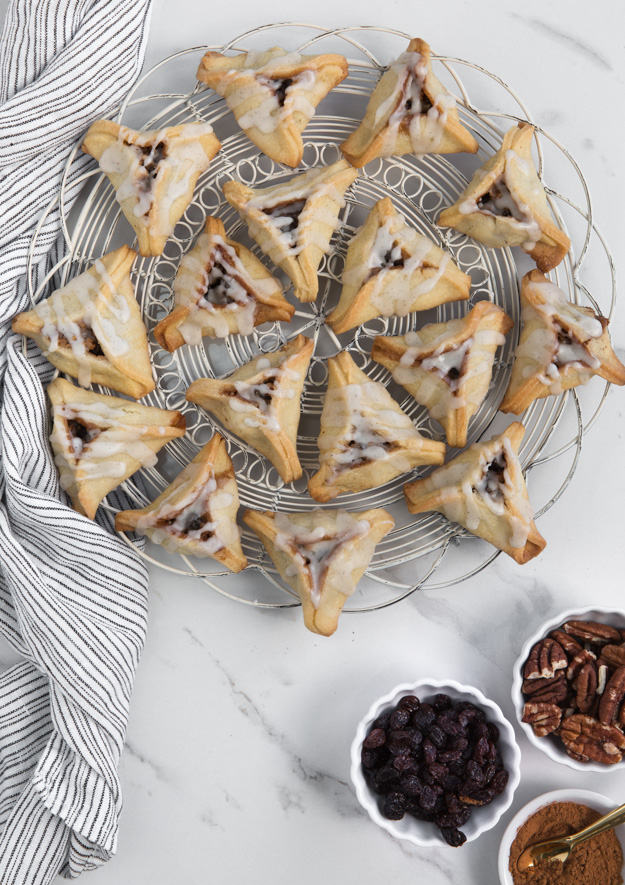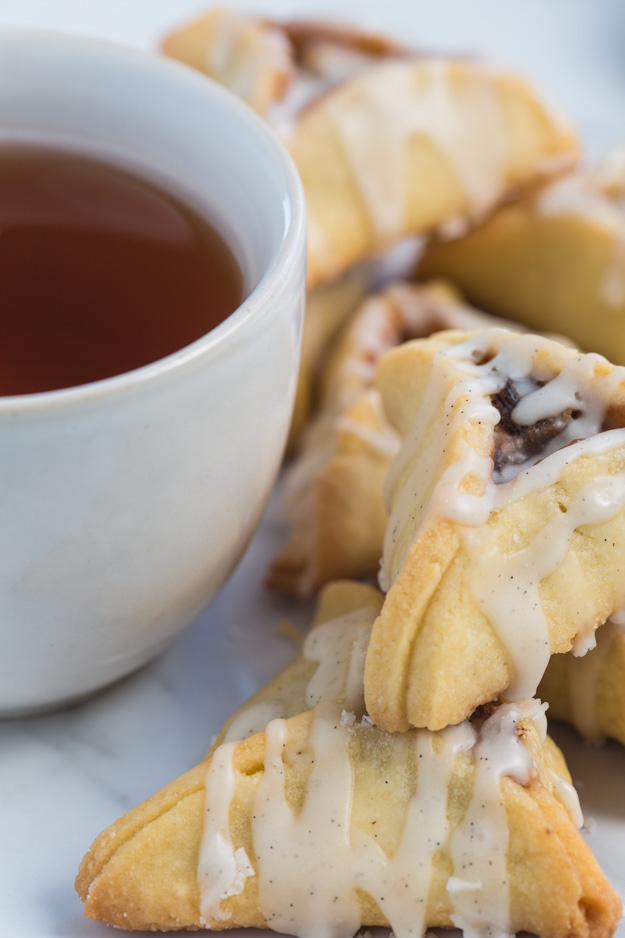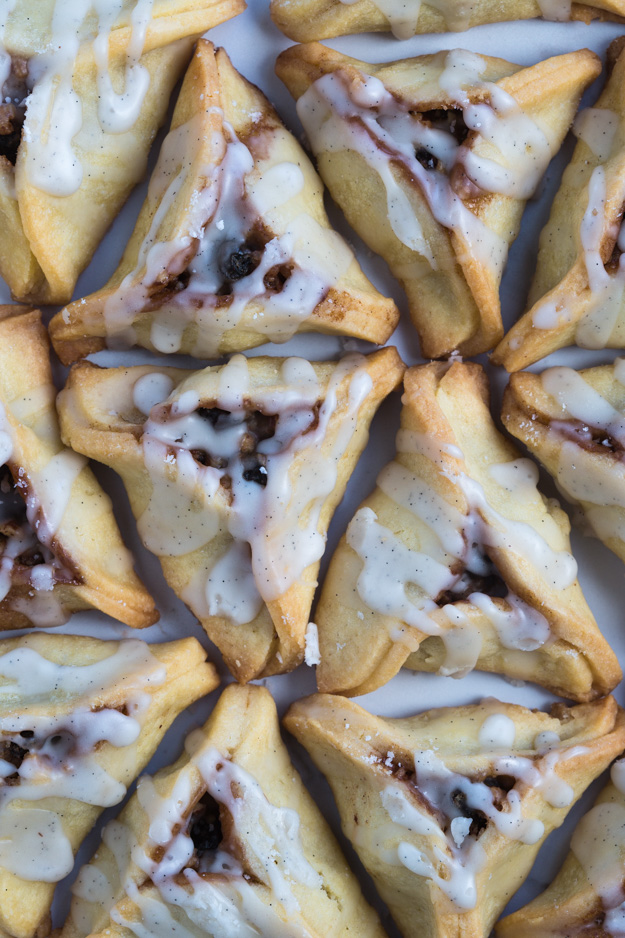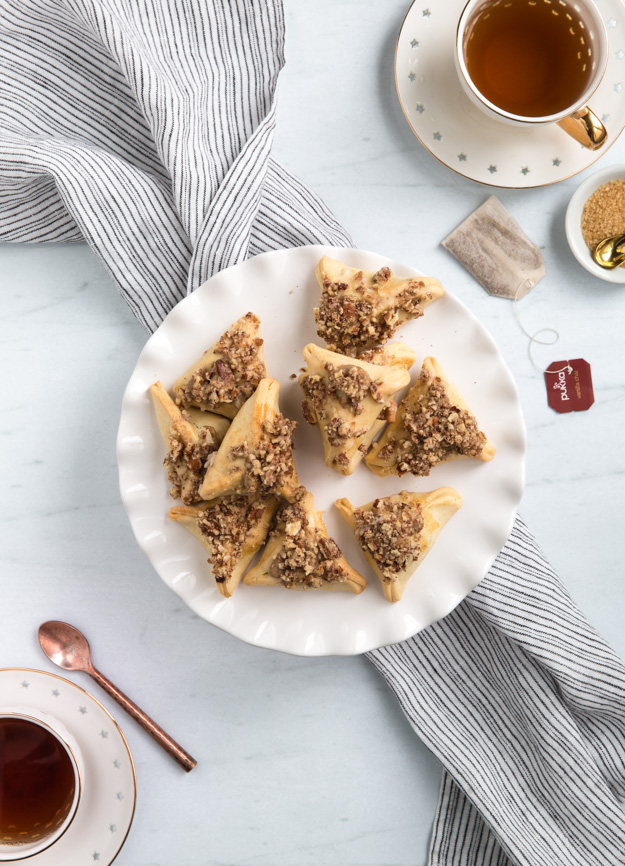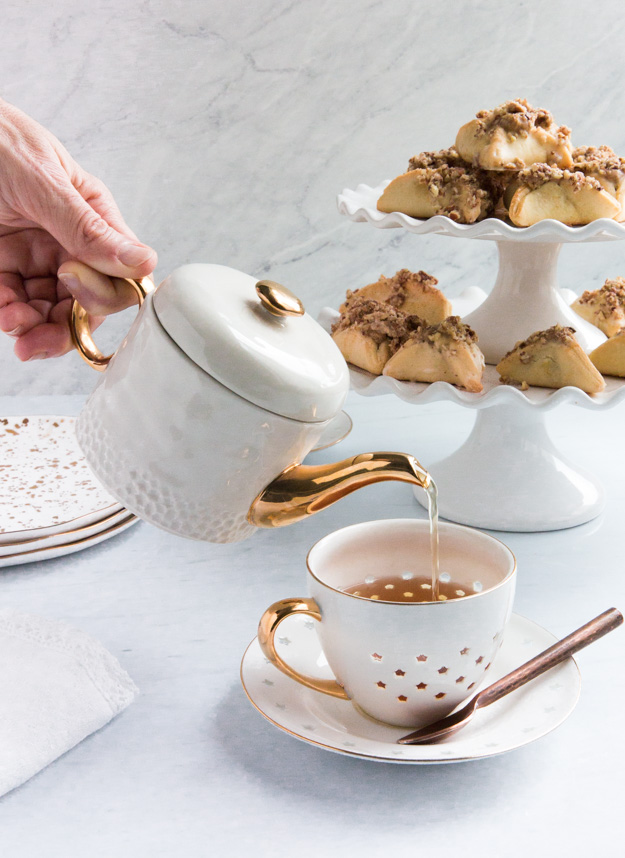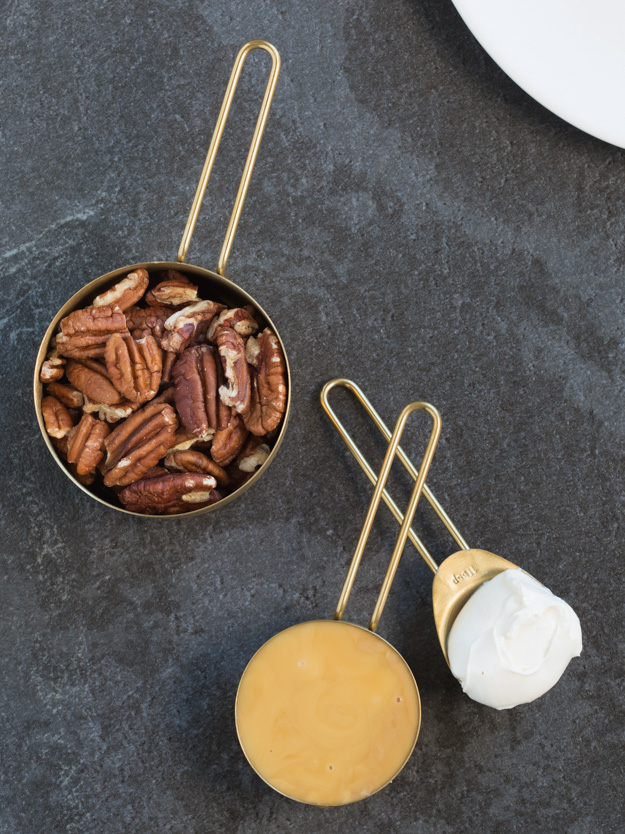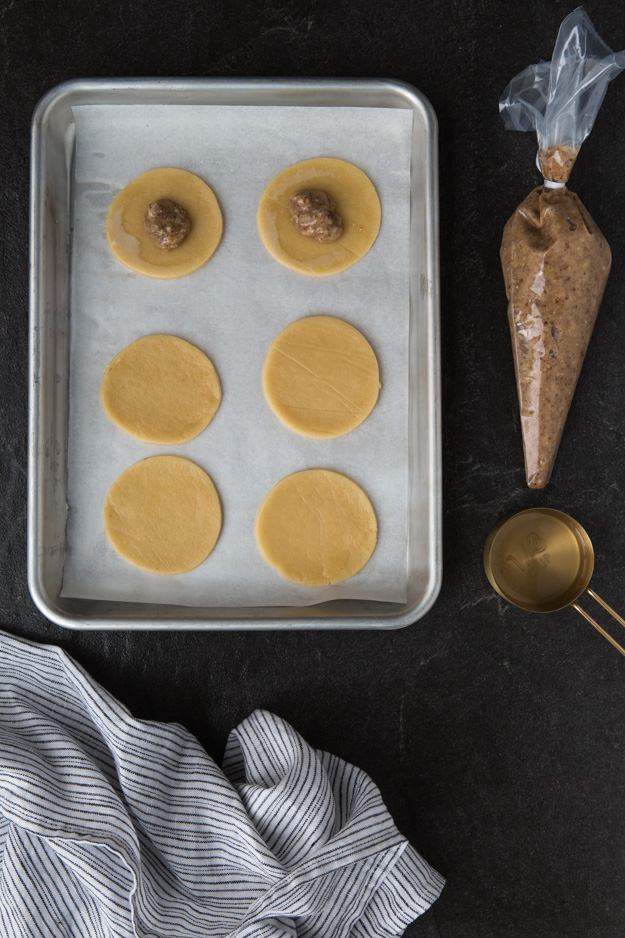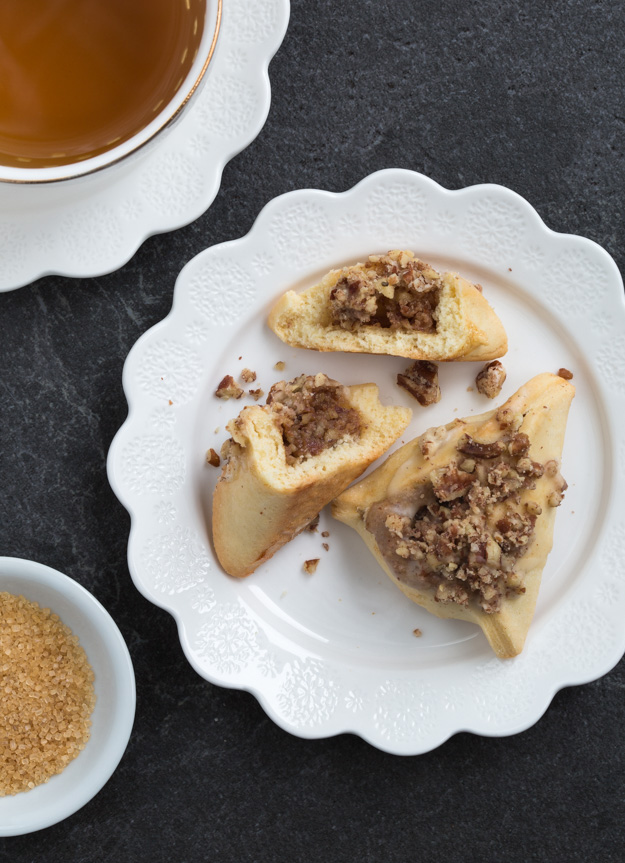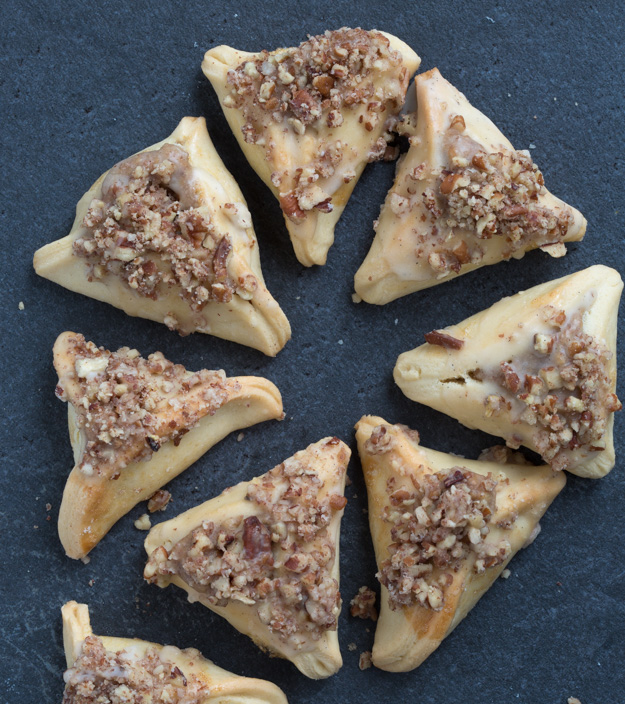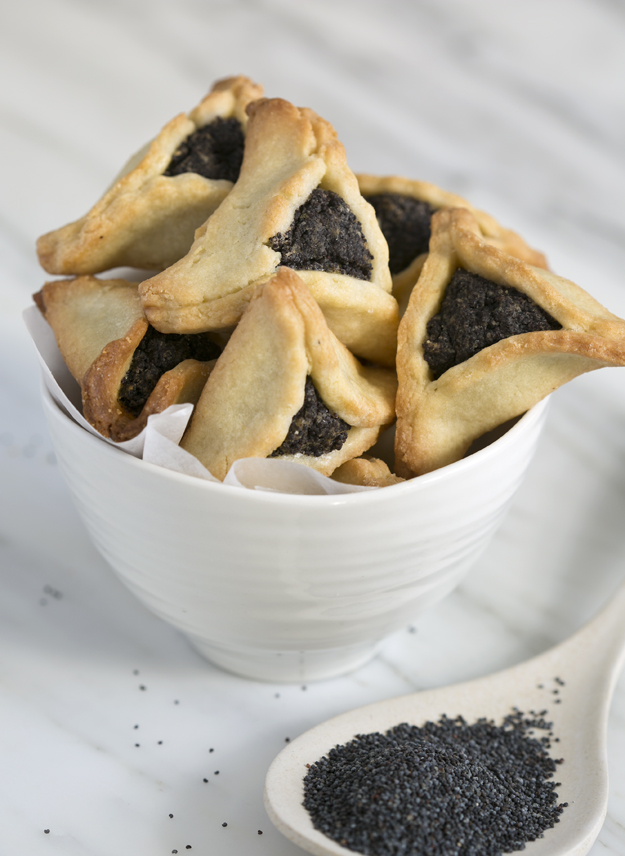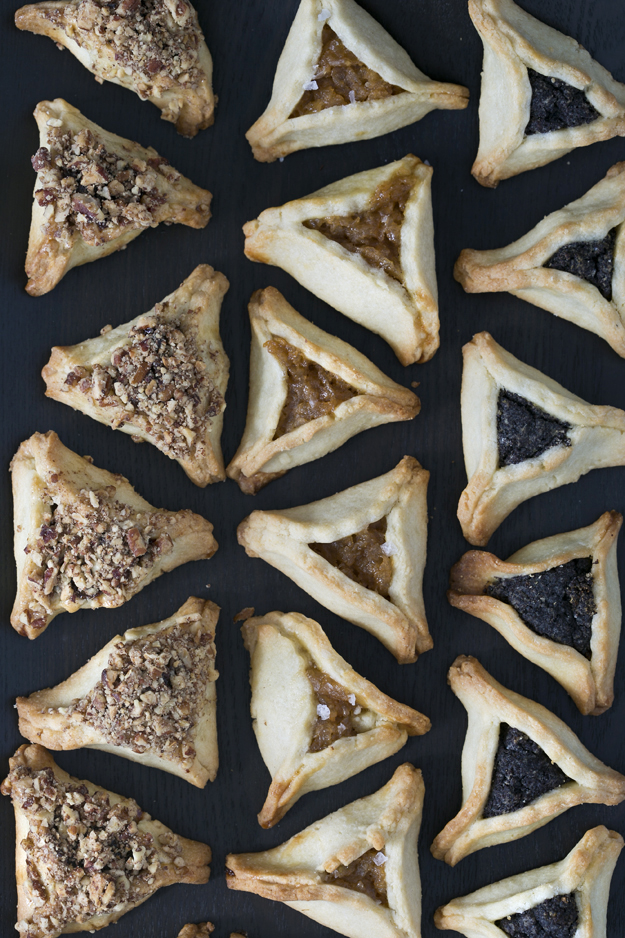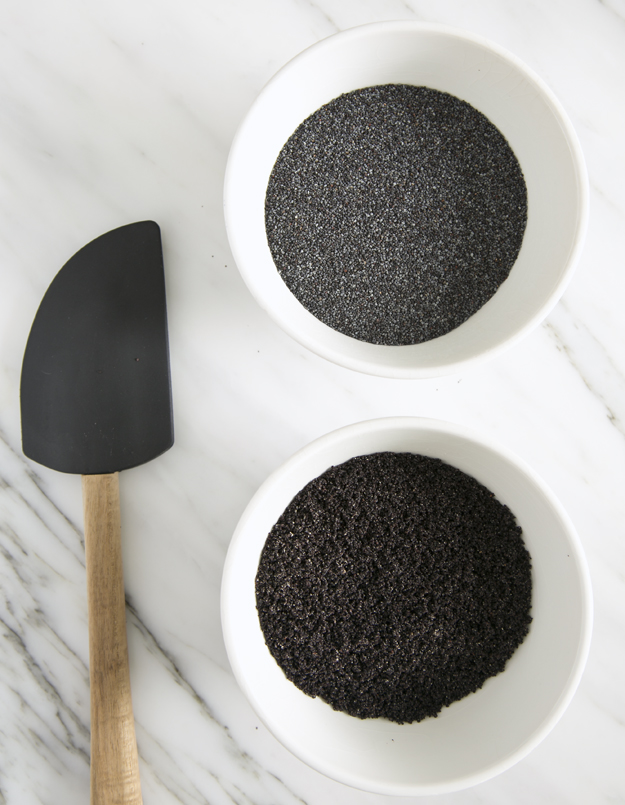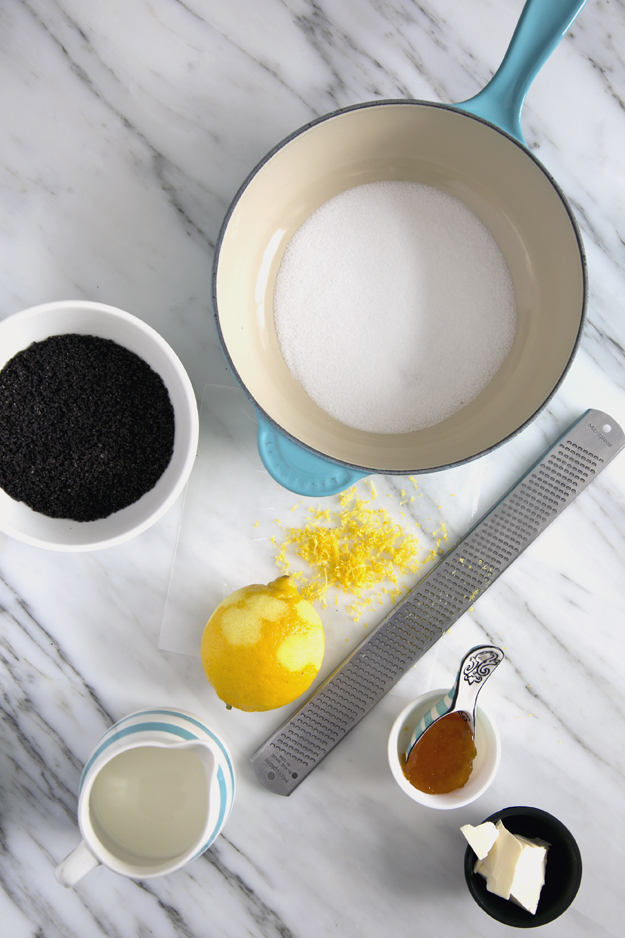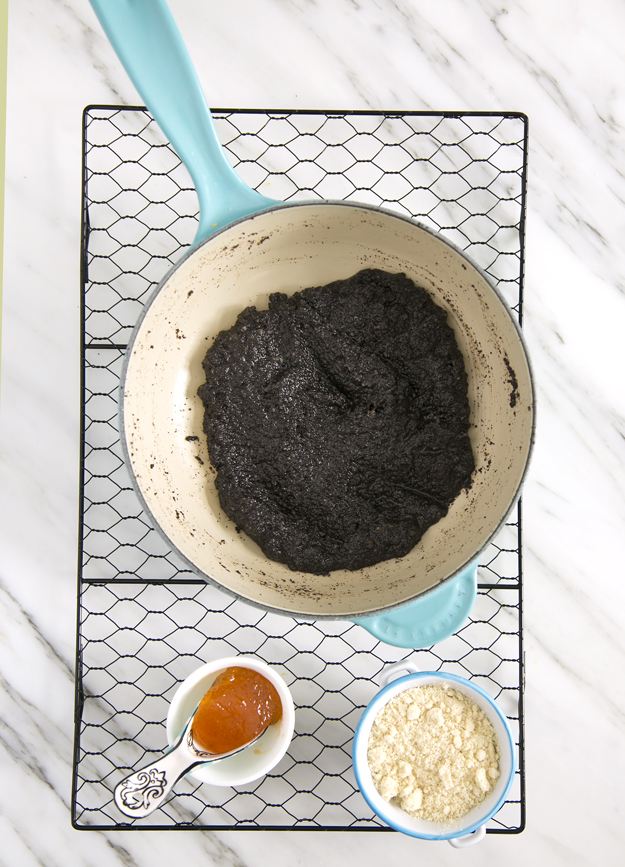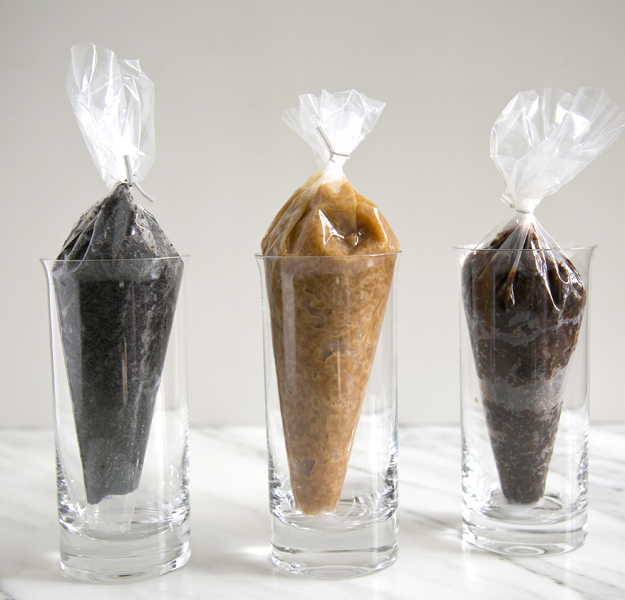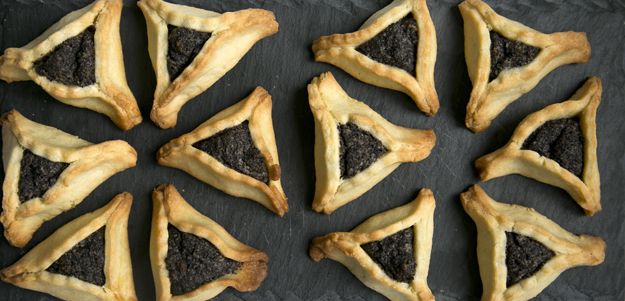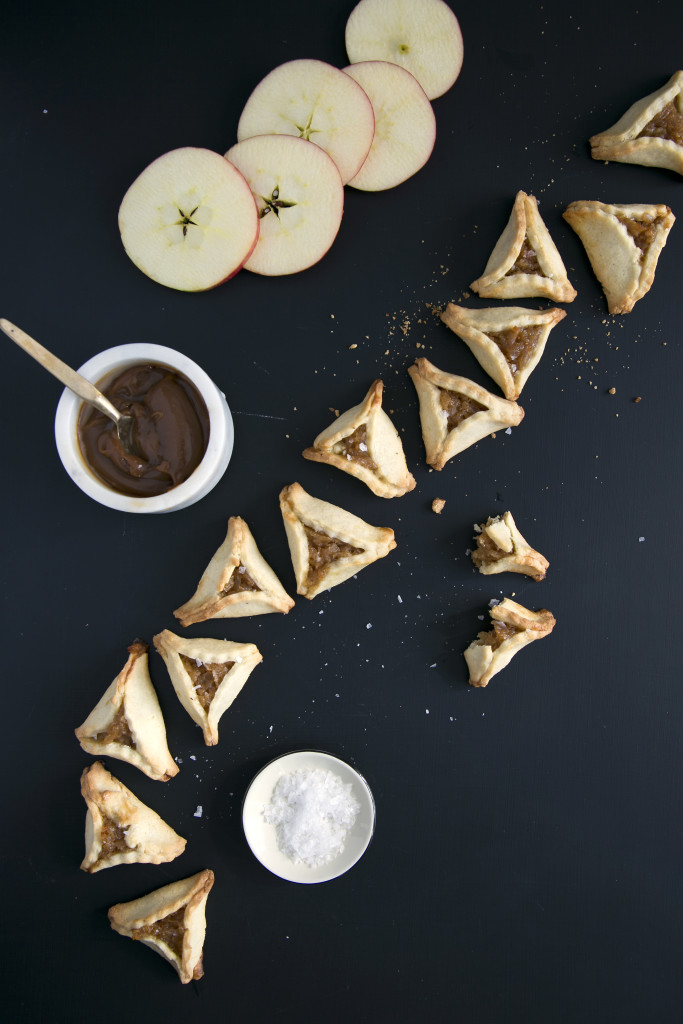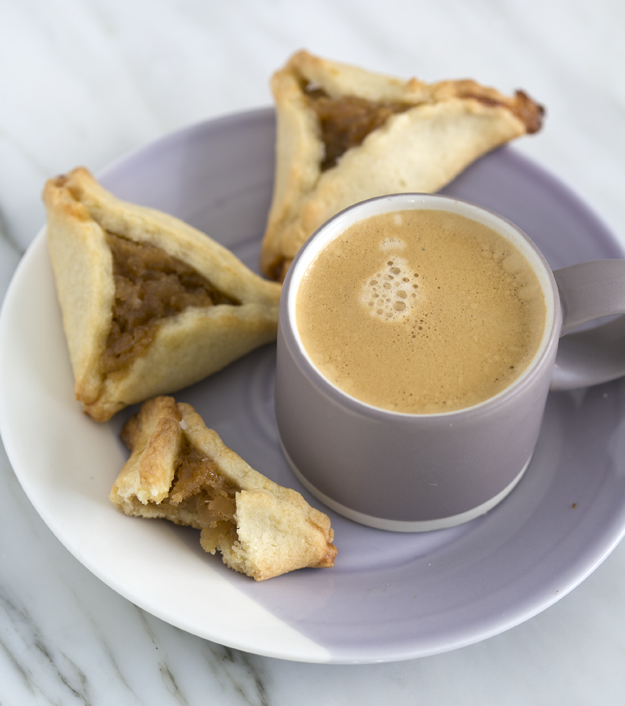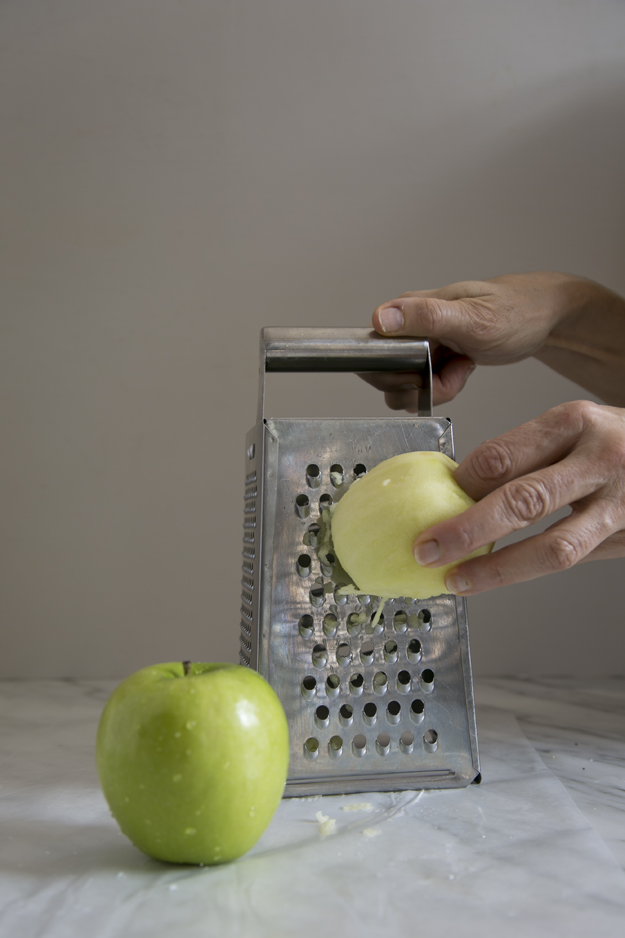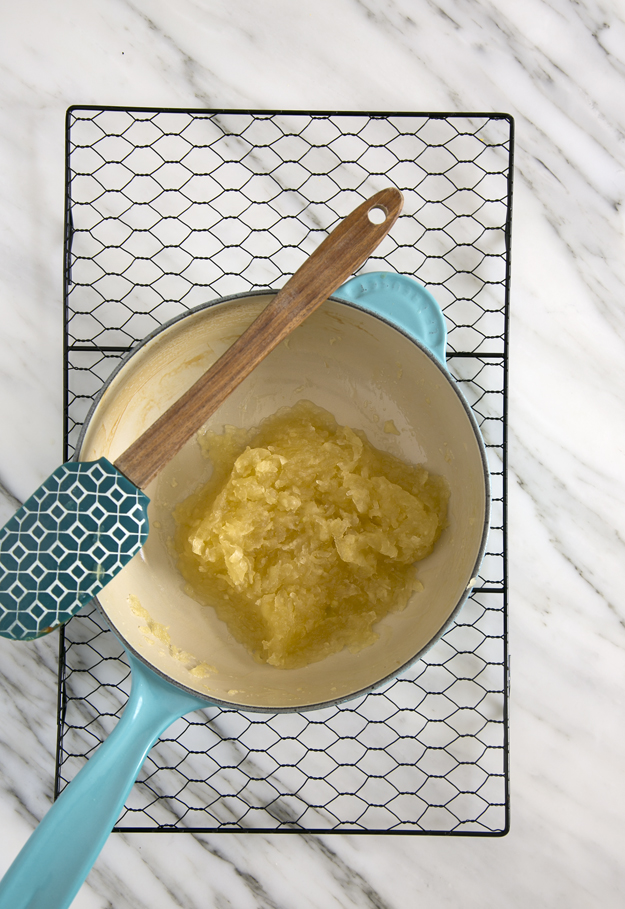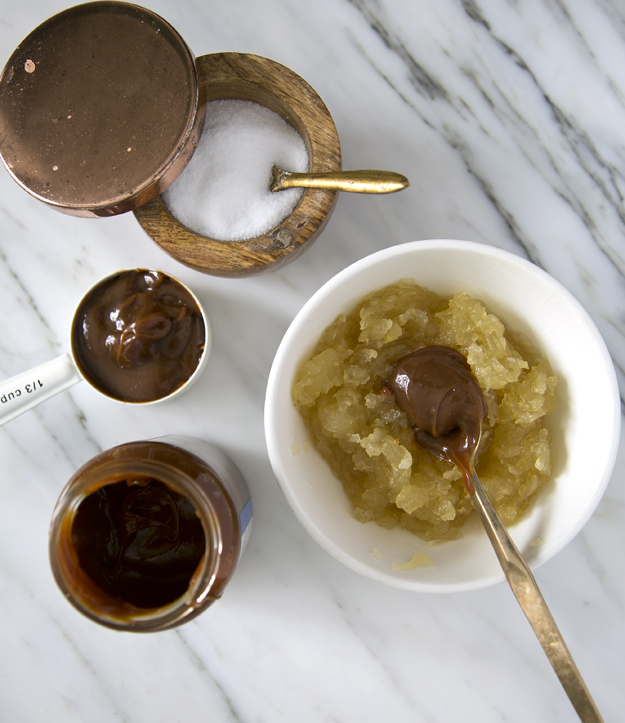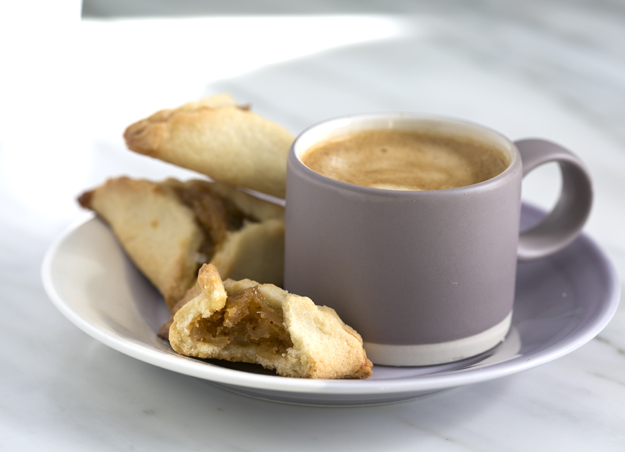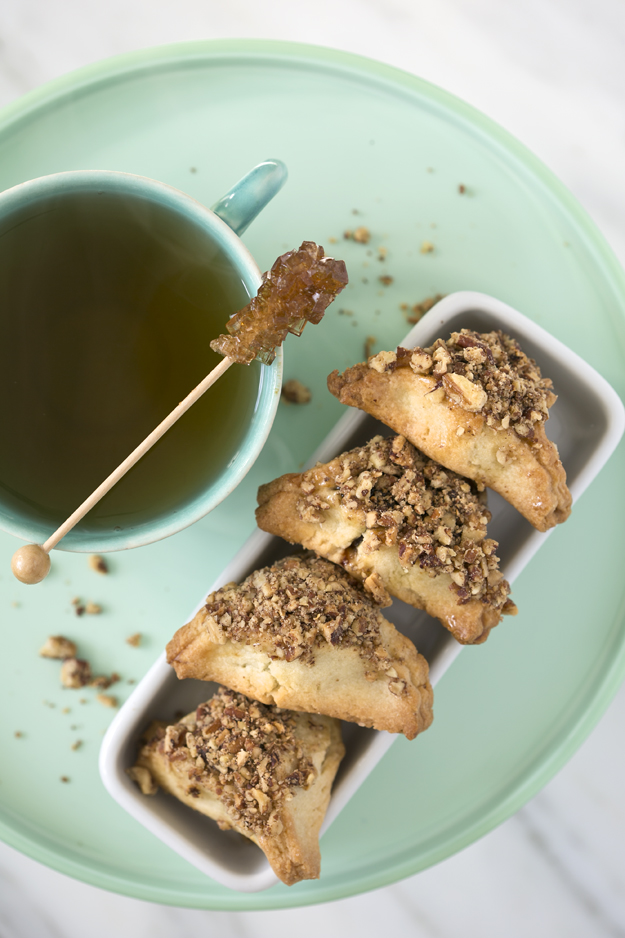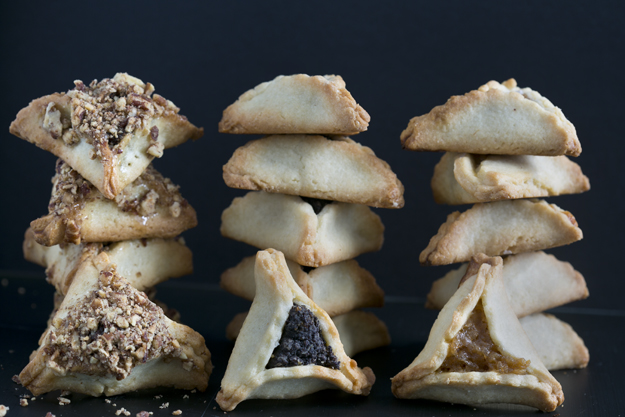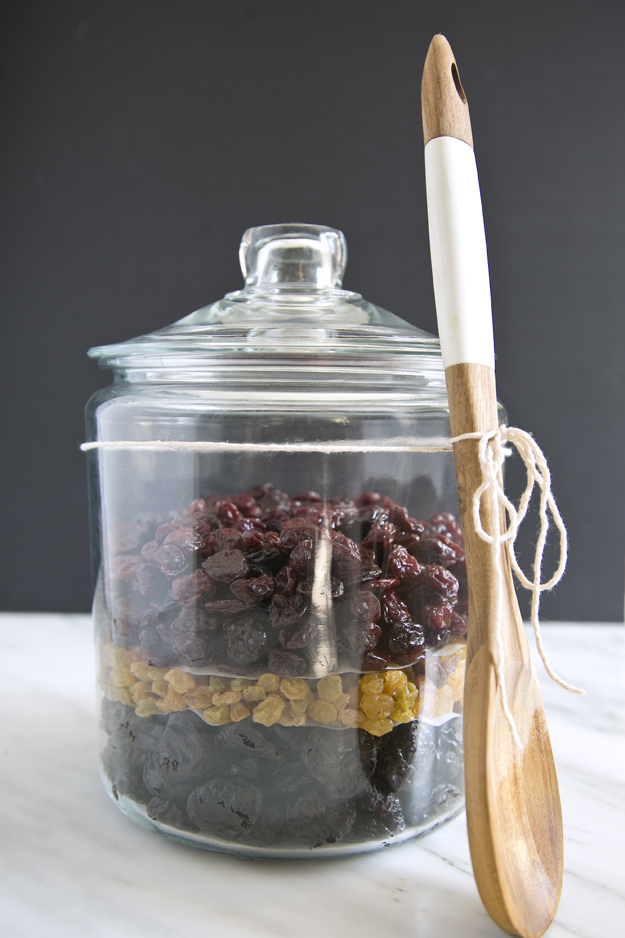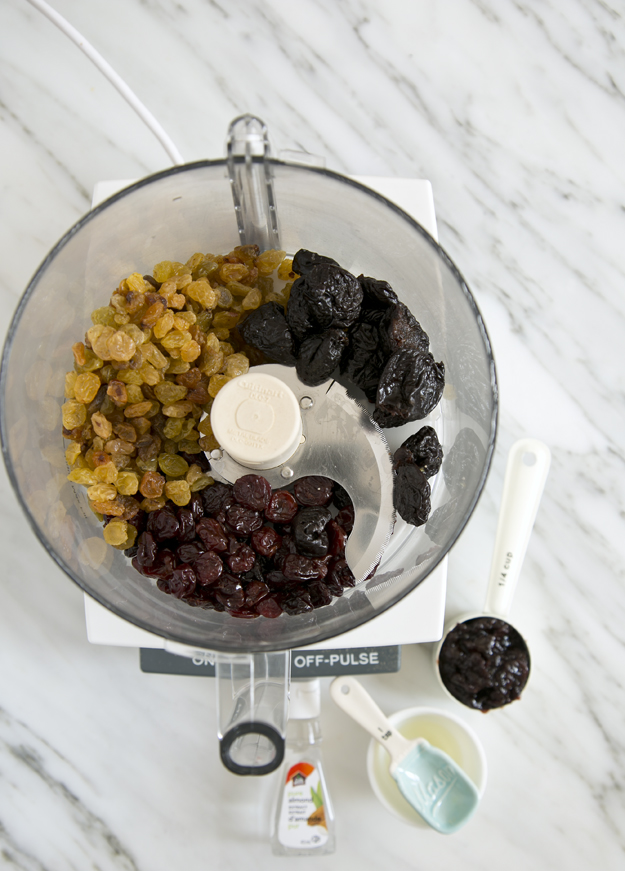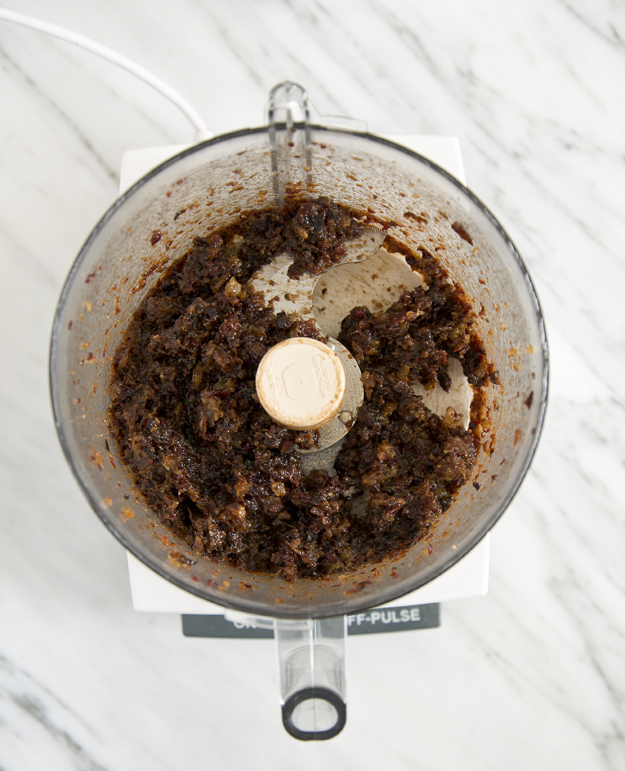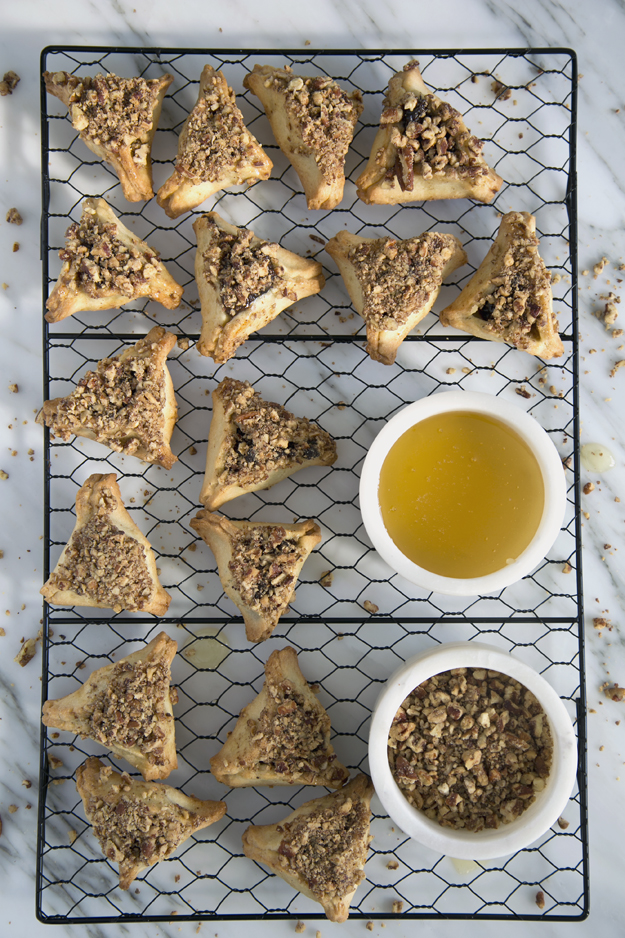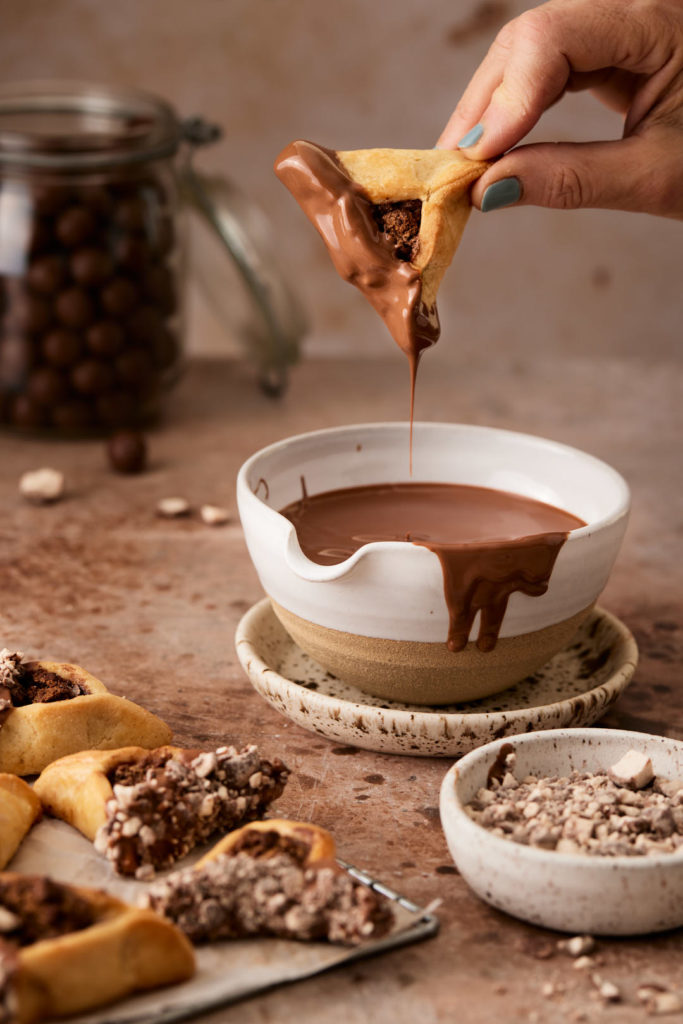
The Jewish holiday of Purim begins next week at sundown on Monday March 6. The traditional Purim treat are triangular shaped filled cookies known as Hamentashen. For those not familiar with this Jewish holiday, I present to you a basic primer, my version of Purim 101. Essentially, the Festival of Purim commemorates a time when the Jewish people living in ancient Persia were saved from extermination. As in every good story, you have your heroes and your villans.
The heroes of the story are Esther, a beautiful young Jewish woman living in Persia, and her cousin Mordecai, who raised her as if she were his daughter. Esther was taken to the house of Achashveirosh, King of Persia, to become part of his harem. King Achashveirosh loved Esther more than his other concubines, and made Esther his queen. Like all intelligent wives, she kept a thing or two about herself hidden from her husband. Upon advice from her cousin Mordecai, she kept her Jewish identity a secret from the King.
Our story’s villan is Haman, a rather arrogant, egotistical advisor to the King. The King appointed Haman as his Prime Minister. Haman despised Mordecai because Mordecai refused to bow down before Haman every time he passed by. Rather than seeking to destroy Mordecai alone for this slight, Haman decided to take revenge on the entire Jewish population living in the Persian empire. The King gave Haman permission to do as he pleased. Haman’s plan was to exterminate all of the Jews.
Nothing got past Queen Esther. She had her finger on the pulse on the kingdom. Somehow she overheard this plot to annihilate all the Jews. She consulted her cousin Mordecai and he persuaded Esther to speak to the king on behalf of the Jewish people. She told her husband, the king, of Haman’s plot against her people and somehow convinced him to save the Jewish people. We’re never told exactly how she convinced him, but there are rumours! The Jewish people were saved, and Haman and his ten sons were hung.
The holiday of Purim focuses on the pleasures of food and drink, more than any other Jewish holiday. It is a time for celebrating and letting go. The shape of hamentashen symbolically represent Haman’s three-cornered hat. Typically, hamentashen are filled with jam or a poppyseed filling.
I’m bucking tradition here and flavouring my hamentashen with Malted Milk Chocolate. Check out the video to see how they come together.
If you are not baking with malted milk powder, you’re missing out on a ton of flavour. Stella Parks called malted milk powder the umami bomb of the baking world. It adds a toasted creamy richness to your baked goods. Ovaltine is one brand readily available at the supermarket. It contains the addition of chocolate. For a more concentrated hit of malted flavour, without the chocolate, I love Hoosier Hills Farms malted milk powder.
These Malted Milk Chocolate hamentashen have a triple hit of malted milk. There is malted milk powder in both the dough and the filling and then I chopped up some malted milk balls to coat the dipped hamentashen in.
Milk chocolate really allows the malted flavour to shine through. Jesse Szewczyk inspired the filling for these hamentashen with her Malted Milk Chocolate Rugelach.
If you’re a Hamentashen novice, here are a few tips for success:
- Roll dough between 2 sheets of parchment paper and chill before cutting into circles
- Don’t overfill. You will regret it when they burst open in the oven.
- Brush edges of dough with beaten egg white. it acts as an effective glue to hold them together.
- Pinch edges and corners really well when shaping.
- Freeze formed hamentashen for about 10 minutes before baking. They will hold their shape better.
- Brush unbaked hamentashen with beaten egg white for some shine.
Click here to print recipe for Malted Milk Chocolate Hamentashen.

